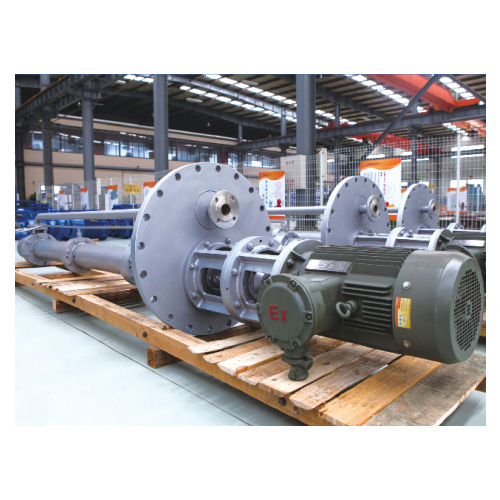
Since the centrifugal pump relies on the impeller inlet to form a vacuum suction, the pump and suction pipe are filled with water before starting, or the vacuum pump is used to exhaust the air to form a vacuum, and the pump casing and suction pipe are strictly sealed, and no air leakage is allowed, otherwise If a vacuum is not formed, it cannot be sucked.
Related tags: centrifugal pumpcentrifugal pumpcharacteristicscentrifugal pumpworking principle
Working principle and characteristics of centrifugal pump

1. Working principle of centrifugal pump
Before starting the pump, fill the pump and the inlet pipe with water. After the pump is running, under the action of the centrifugal force generated by the high-speed rotation of the impeller, the water in the impeller channel is thrown around and pressed into the volute. The impeller inlet creates a vacuum. The water in the pool is sucked along the suction pipe under the external atmospheric pressure to supplement this space. Then the inhaled water is thrown out by the impeller through the volute and enters the outlet pipe. It can be seen that if the impeller of the centrifugal pump rotates continuously, it can continuously absorb and press water, and the water can continuously rise from low to high or far. In summary, the centrifugal pump is called centrifugal pump because it lifts water to a high place under the action of the centrifugal force generated by the high-speed rotation of the impeller.
2. General characteristics of centrifugal pumps
(1) The flow direction of water along the centrifugal pump is sucked along the axial direction of the impeller, and flows out perpendicular to the axial direction, that is, the direction of water flow in and out is 90° with each other.
(2) Since the centrifugal pump forms a vacuum suction by the impeller inlet, the pump and suction pipe are filled with water before starting, or the vacuum pump is used to exhaust the air to form a vacuum, and the pump casing and suction pipe are strictly sealed and must not leak. Air, otherwise a vacuum cannot be formed, and it cannot be sucked.
(3) Since the impeller inlet cannot form a vacuum, the suction height of the centrifugal pump cannot exceed 10 meters, plus the along-the-way loss caused by the flow through the suction pipeline, the actual allowable installation height (the height of the pump axis from the suction water surface) is much less than 10 Meter. If the installation is too high, the water will not be absorbed; in addition, because the atmospheric pressure in the mountain area is lower than that in the plain, the installation height of the same pump should be lowered when the same pump is installed in the mountain area, otherwise it cannot be sucked.